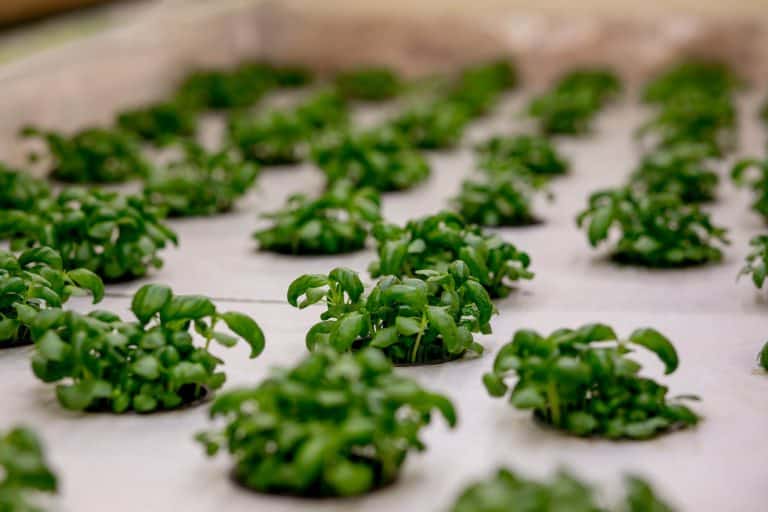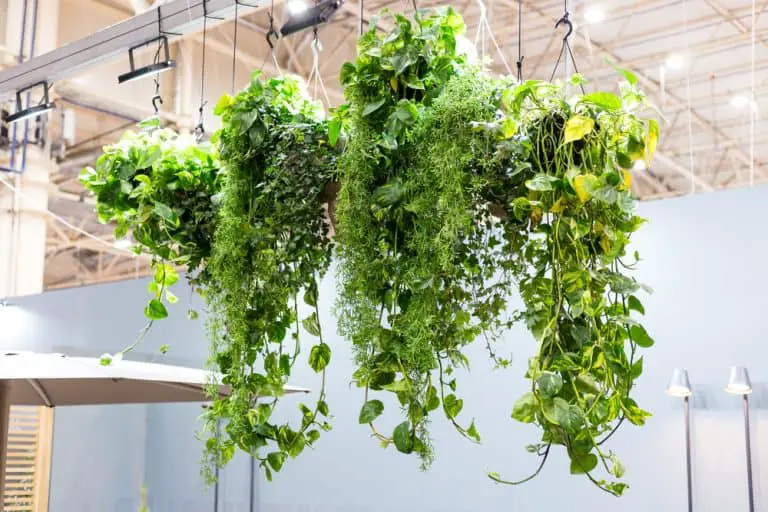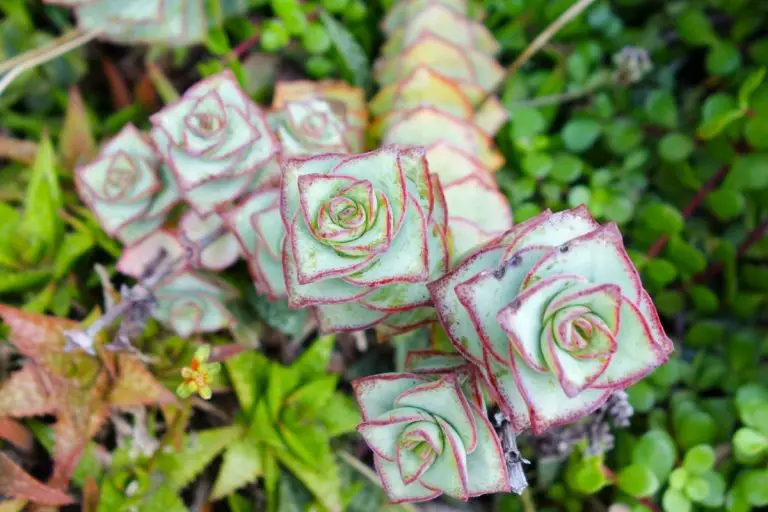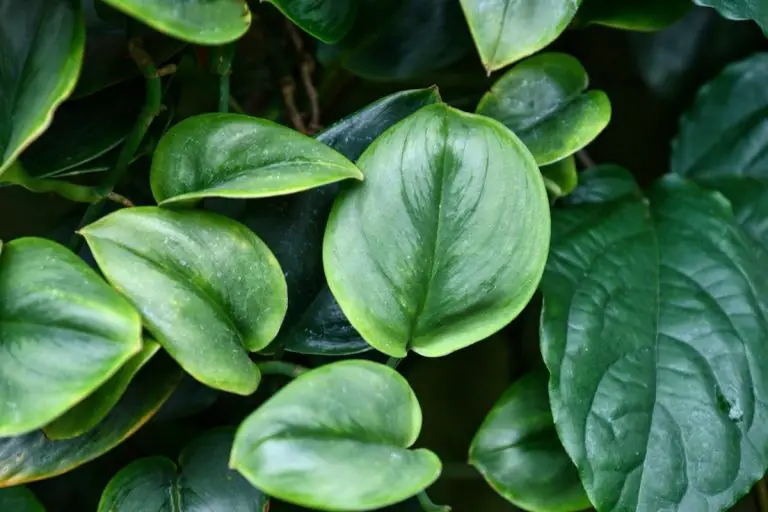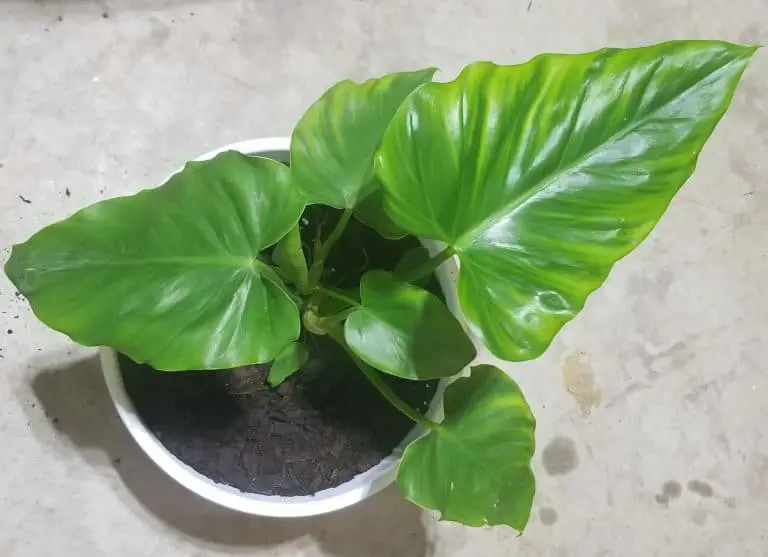How To Grow Tomatoes In A Polytunnel-The Right Way in 2022!
Are you interested in knowing how to grow tomatoes in a polytunnel?
If you, like me, enjoy growing your fruits and vegetables, you might often worry about your vegetable patch during the off-season.
One of my greatest fears is sowing, planting, and then watching my precious crop suffer damage because of seasonal effects.
Tomatoes are a warm-season crop and so need a certain amount of warmth and humidity to grow perfectly. It is observed that tomato plants bear fewer fruits when there is a change in the ideal temperature and weather conditions.
What exactly can you do to ensure you get a healthy and tasty crop of tomatoes all year long, without worrying about the weather conditions?
In a study, it was found that growing tomatoes (and other plants) in polytunnels with proper care and maintenance showed improved growth, quality, and yield of crops in the off-season.
So all you have to do now is figure out how to grow tomatoes in a polytunnel. In this article, we will go over all of the steps you need to take to ensure a healthy, productive tomato crop all year.
At A Glance: How To Grow Tomatoes In A Polytunnel
Among other things, we will be taking a deep dive and learning about:
- Ideal Conditions For Growth
- Sowing Seeds Correctly
- Planting And Growing Tomatoes
- Use Of Compost And Fertilizers
- Clipping The Shoots
- Harvesting The Tomato Crop
- Varieties Of Tomatoes And Their Growth Time
- Pest Control and Disease Resistance
- Pollination of Tomato Flowers in Polytunnel
- What’s A Polytunnel
- Sizes, Shapes, and Types Of Polytunnels
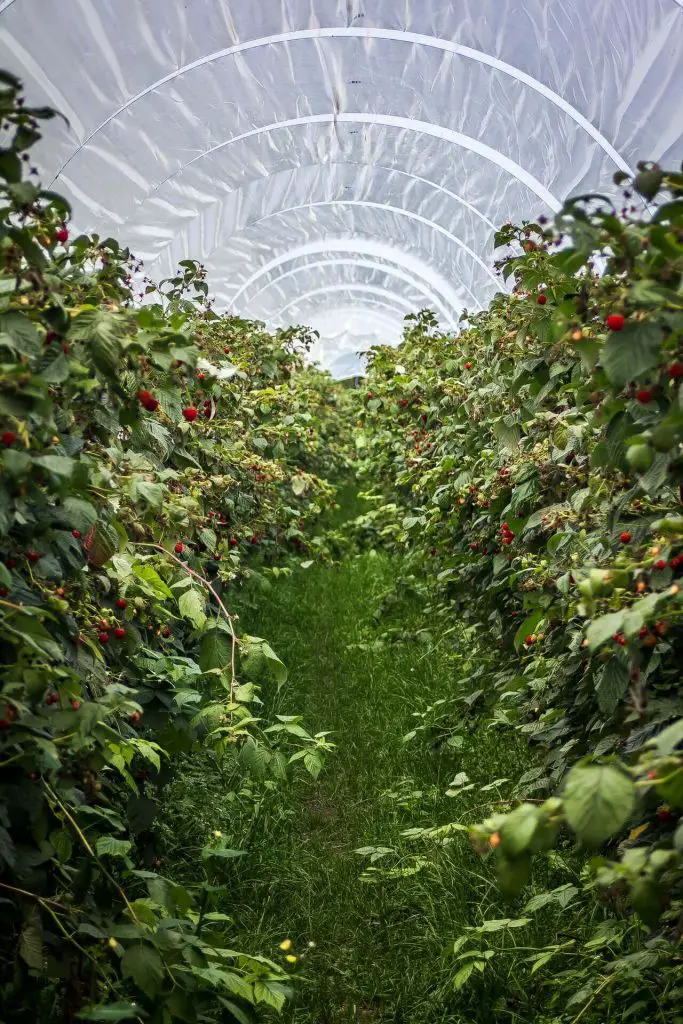
Affiliate Disclosure
Some of the links here are affiliate links, and I may earn if you click on them, AT NO EXTRA cost to you. I hope you find the information here useful! Thanks!
Related Posts
- How To Grow Tomatoes Indoors Like A Pro! 2022
- How To Grow Tomatoes Indoors With Lights + Growing Tips! [2023]
- Can You Grow Tomatoes In A Grow Tent? + Tips For Quick Growth [2022]
- Tomato Plants Over Winter: How To Help Them THRIVE! [2023]
How To Grow Tomatoes In A Polytunnel – Step-By-Step
1. Ideal Conditions For Growth
Tomatoes are a warm-season crop and grow best in temperatures ranging from 65-85 degrees Fahrenheit (18-28°C).
The crop needs an average sunlight of 6-7 hours of daily sunlight. Tomatoes need regular watering, around 1-2 inches per week.
If you wonder how to grow tomatoes all year round, using a polytunnel is an easy way out.
Growing tomatoes in a polytunnel is useful because when the temperatures go down and the sunlight is low in the cooler months, the temperature inside the polytunnel is still warm allowing the tomatoes to grow fully.
2. Sowing Seeds Correctly
For sowing, I take a small pot and keep a few tomato seeds in a mixture of compost and soil.
The most important thing to ensure the seeds sprout is that the seeds should be sown around ¼ – ½ inch deep, neither too shallow nor too deep.
The watering plan should be so that the soil remains slightly moist at all times.
The pot should be placed in an area with sufficient sunlight for the seeds to germinate. You will see small leaves in the young seedlings in around 2 weeks.
3. Planting And Growing Tomatoes
The seedlings need to be moved to new, bigger pots as they grow as being in smaller pots will slow down their growth.
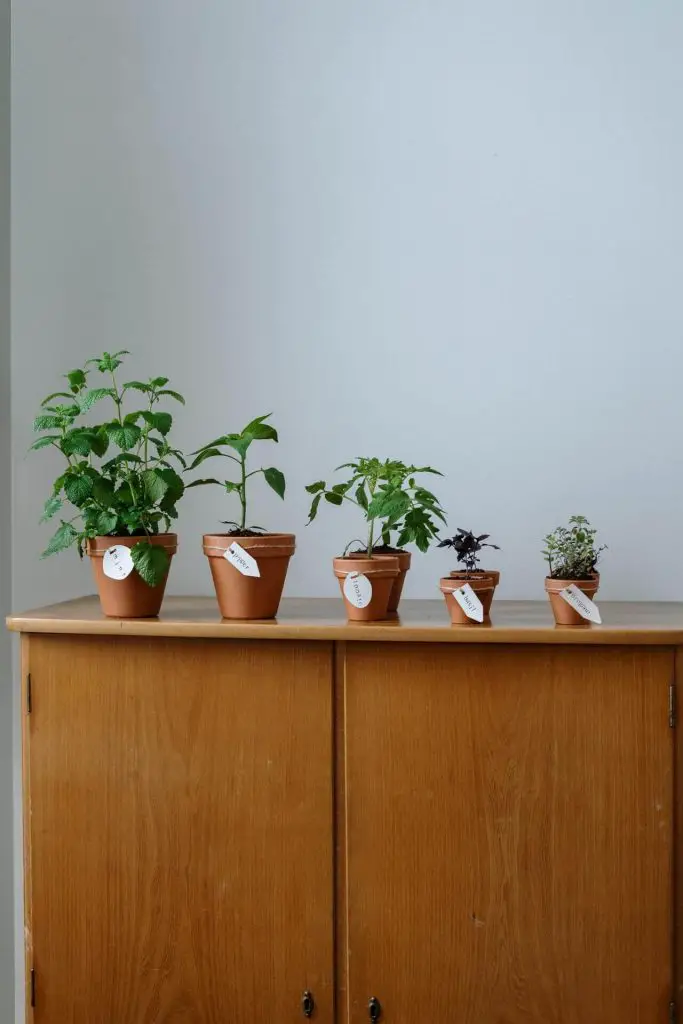
The plants can be repotted 2-3 times before planting in the polytunnel. After shifting them, the pots should be kept under a continuous light source.
In place of pots, grow bags can also be used and they are not very difficult to use so you don’t have to worry about how to grow tomatoes in bags.
It is better to use grow bags of bigger sizes to make sure the plants have plenty of space to grow. A 10-gallon bag is ideal and two tomato plants can be easily grown in it.
While growing tomatoes in a polytunnel, the seedlings need to be properly watered so they don’t dry off.
However, watering the leaves will result in a fungal infection to the plant. The plant should be watered around the stem so the roots soak up maximum moisture.
In a grow bag, the plants will not be waterlogged even after over-watering because grow bags have holes to let the extra water out.
Another important thing is spacing tomatoes in a polytunnel. For healthier plants, it’s better to leave a space of 2-3 feet (60-90 cm) between any two plants. For larger tomato varieties, 4-5 feet should be left.
Once the tomato plants are moved outside in a polytunnel, they need a lot of care and maintenance. Tomato plants need support in their growth as the stem can fall over with the weight of the fruits and leaves, also causing the plant to be uprooted.
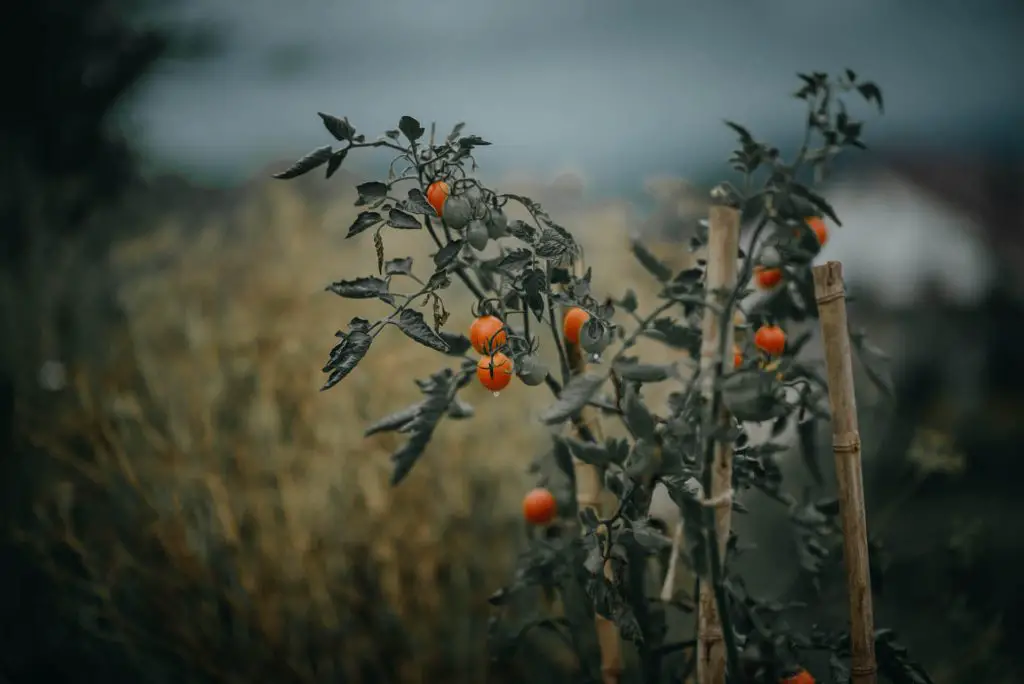
The tomato plants should be tied after the first bunch of flowers bloom. I usually start tying them with a twine/string to a solid support like a stake or set up a cage around the plants and tie them to the cage so that they grow straight.
4. Use Of Compost And Fertilizers
People with vegetable patches in their homes often question themselves on how to grow tomatoes faster. An important factor for excellent high tunnel tomatoes is the use of good-quality compost.
Studies found that organic compost rich in nutrients promotes tomato plant growth.
Using vermicompost improves the quality as well as the number of tomato fruits while also promoting the fertility of the soil.
This organic compost is made up of vegetable and fruit waste, dry leaves, egg shells, and cuttings of newspapers/cardboard. The worms in the soil mix these materials producing organic manure for the plants.
5. Clipping The Shoots
To maximize the fruit production in your tomato plants, it is necessary to clip the shoots from time to time. These shoots are primarily ‘suckers’, growing between the main stem and the leaves.
But why is it necessary to trim these shoots? When we remove the suckers/side shoots from the plants, the energy and plant nutrients are redirected to promote the growth of the tomato fruits.
It was found in an experiment that when the side shoots in tomato plants were trimmed, the harvest was considerably more than in the plants which weren’t trimmed.
This is because the side shoots compete with the fruits and flowers for space, light, and nutrients.
6. Harvesting The Tomato Crop
Tomato fruits usually grow within 60-80 days after planting in the ground but the ripeness also depends on the variety of the tomato plant.
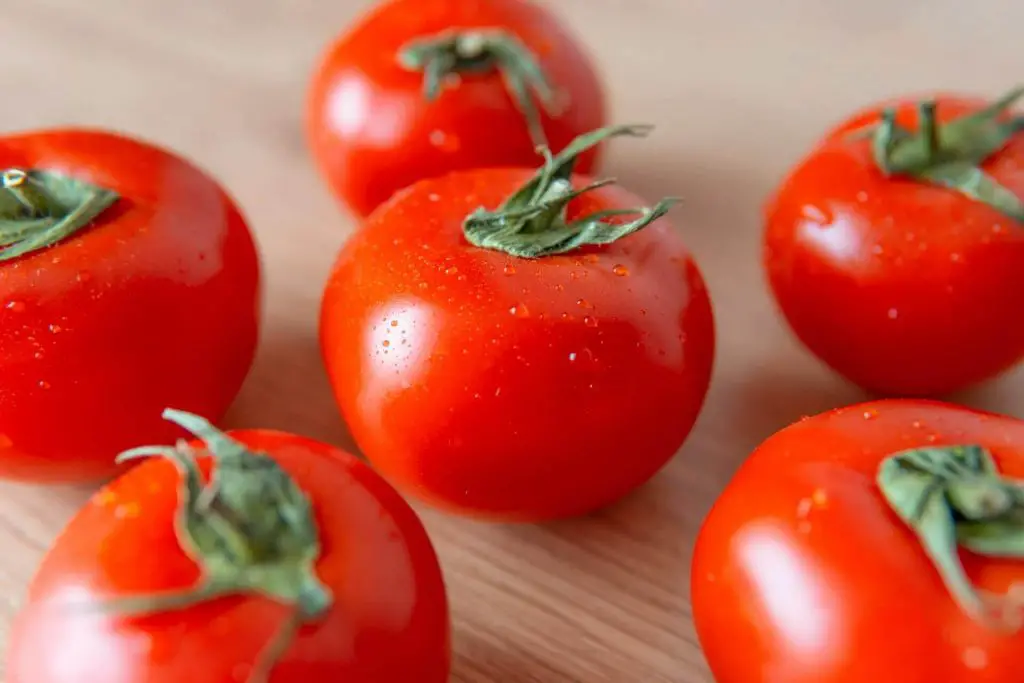
I usually pick tomatoes when the color of the fruit is red/orange and they become slightly tender – not too hard and not too soft.
Once the tomatoes start ripening, they should be immediately clipped from the vine. A pair of clippers can be used to gently cut the tomatoes from the stem, making sure not to harm the fruit as well as the plant.
7. Varieties Of Tomatoes And Their Growth Time
Tomatoes are of two types – determinate and indeterminate. Determinate or bush tomatoes are those which grow to a certain height and the plant bears all fruits around the same time.
Indeterminate tomatoes don’t have a specific shape and size. The plants may reach up to 10 feet high.
If you want to grow tomatoes the whole year then the best choice is indeterminate tomatoes as they keep growing and producing fruits throughout the year.
One of the most popular are the cherry tomatoes and I prefer to grow them too!!
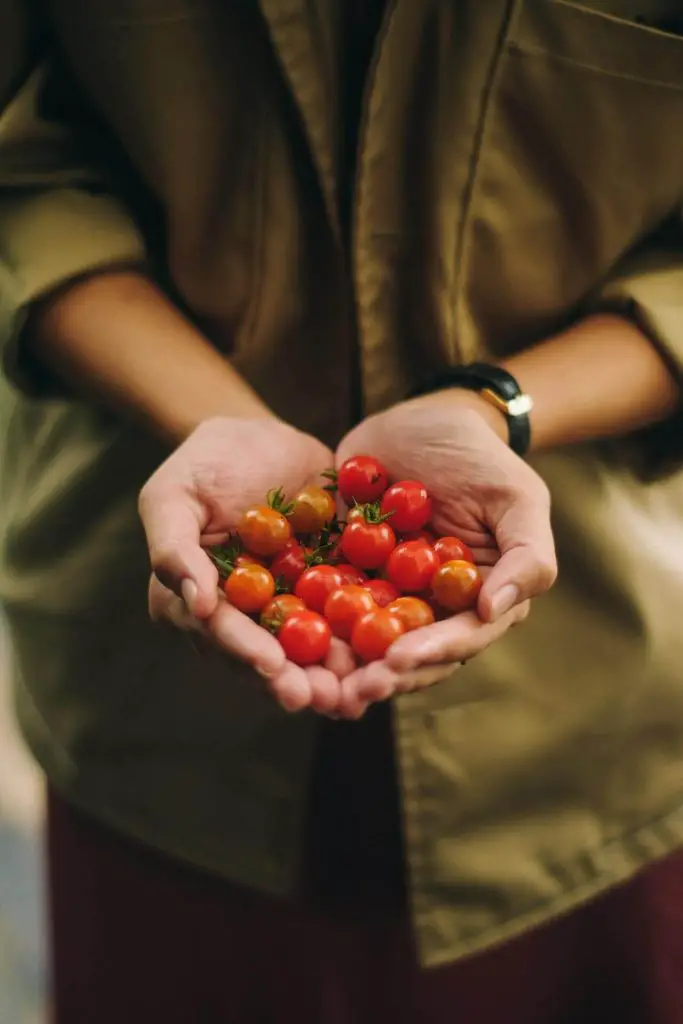
Cherry tomatoes are found in both indeterminate and determinate varieties. So if you wonder how to grow cherry tomatoes in a pot, don’t worry because with proper care cherry tomatoes thrive in pots.
When I started my vegetable garden, I questioned myself about how to grow cherry tomatoes in pots, but now I have a continuous supply of juicy cherry tomatoes and all of them grew in pots in the polytunnel.
A 5-gallon pot has enough space to grow bush cherry tomatoes properly. Only one seedling should be planted in one pot as more seedlings will slow down the growth.
Organic compost should be used along with potting soil to ensure the plant receives all the essential nutrients. It should be watered regularly so that the soil is moist and kept in an area with access to sunlight.
In bush varieties, the tomatoes will ripen at once so you can pick them together.
8. Pest Control and Disease Resistance
Crop rotation is a pretty effective method to control diseases/pests. Legume crops (peas, beans, and pulses) are ideal to grow in an area with tomato crops.
To add to that, peas and beans grow very well in polytunnels so I never had to worry about what can I grow in a polytunnel apart from tomatoes.
Legume crops are nitrogen and nutrient-rich and are not affected by the same diseases as grassy crops or tomatoes so growing these after tomatoes improve the soil quality while also reducing the risk of diseases and pests in the second tomato crop.
The tomato crops can meanwhile be grown in pots/containers.
Pest and disease management are essential to get a healthy crop. Here is a list of the different diseases and pests affecting the tomato crops and how you can protect your tomatoes.
9. Pollination of Tomato Flowers in Polytunnel
Tomato plants are self-pollinating as they have both the male and female parts in one flower and usually don’t need external help to bear fruits.
However if the plant doesn’t bear fruits, a paintbrush can be used to collect and sprinkle the pollen over the female part of the flower to help the plant in producing fruits.
What’s A Polytunnel
Greenhouses are often heard of, but what exactly are polytunnels?
A polytunnel is a tunnel-like structure made with a combination of steel/aluminum and polyethylene – the most commonly used plastic. It can also be called a hoophouse, polyhouse, or high tunnel.
A question I’ve come across a lot is how to make a polytunnel?
A polytunnel is usually a semi-circular or square-shaped structure made up of steel or aluminum on which a plastic/polyethylene sheet is placed. The ground has to be slightly dug up to set up the frame.
Setting up a polytunnel requires 2-3 people so please don’t try to do it all by yourself.
A door is to be erected and placed in the center as the entrance to your polytunnel. The hoops/frame is placed accordingly with enough and equal spacing between any two hoopsThe plastic has to be large enough to cover the whole structure and will have to be wrapped and taped to the bottom of the frames, buried in the ground.
If you go for a DIY polytunnel kit, it comes with an instruction manual with all the details on how to set up a polytunnel.
Sizes, Shapes, and Types Of Polytunnels
Polytunnels come in various shapes and sizes and you can choose the one which you find the most convenient for your vegetable garden.
Domestic polytunnels are for domestic use and are ideal for home growers. These are available in a range of 6 ft (1.83 m) – 14 ft (4.26 m) in width and are usually semi-circular.
Commercial polytunnels are huge polytunnels used for growing lots of crops at the same time. These come in sizes from 16 ft (4.88 m) – 30 ft (9.14 m) wide and are straight-sided and curved.
This polytunnel comes with a coated steel frame and double-layered poly cover. It is available in two sizes and has entry and exit doors. For ventilation, it also has 6 vents with mesh.
This polytunnel is 9 feet long and 6 feet wide and high. It comes with a tubular steel frame and can be installed easily.
It is available in 3 sizes and has 2 entrances. It comes with an instruction manual on how to make polytunnel. It has a UV-protected poly cover and also has 6 rolled-up windows.
Essential Care Of Polytunnels
Polytunnels have made life easier for people with kitchen gardens as you can grow vegetables and fruits without worrying about the season. However, you need to care for the polytunnel so it lasts for a long time.
After setting up, make sure to check how to use a polytunnel in the instruction manual so it doesn’t get damaged before time.
With time, the plastic of the polytunnel might rip and this will need to be patched up at the earliest else the hole will keep getting bigger. However, polytunnel repair tapes can be used for fixing such tears.
This heavy-duty repair tape can be used to fix cracks and rips in the polytunnel sheet. It is 108 feet long and 2 inches in width and can easily cover big cracks too.
This UV-protected tape can be used to easily repair cracks and splits in poly cover. It is 25 m long and can be used to fix cracks in greenhouses too.
This repair tape is UV and water-resistant. It is highly adhesive and can even last in harsh weather.
Benefits Of Growing In Polytunnels
We know now how to grow tomatoes in a polytunnel but what to grow in a polytunnel other than tomatoes?
After multiple trials, I found that there are several crops I can grow in a polytunnel.
Potatoes, carrots, French beans, peas, cabbage, broccoli, radish, basil, coriander, peaches, strawberries, pumpkins, brinjals/aubergines, and okra are some plants I’ve grown in my vegetable garden.
The benefits of polytunnels are that:
1. Polytunnels are easier to construct compared to greenhouses.
2. Polytunnels provide an ideal environment for plants to grow throughout the year, even in a cold climate.
3. The quality and quantity of the fruits are more when grown in polytunnels as the plants are less likely to get damaged by environmental conditions, pests, and diseases.
4. The usage of fertilizers is less and organic compost is more, producing more nutrient-rich, organic veggies and fruits.
5. In winters, you don’t need to worry about how to grow tomatoes in a grow bag outside. You can simply place the grow bags inside the polytunnel and watch your plants grow.
FAQs –
Should A Polytunnel Be In Full Sun?
You might wonder if a polytunnel should be in full sun. A polytunnel should be placed in such a way that it’s under the sun and can get sunlight all day. Shaded/covered areas with low sunlight should be avoided.
When Should I Plant Tomatoes In My Polytunnel?
You might question when I should plant tomatoes in my polytunnel? The best time to start planting seeds is from the end of February to the mid of March inside a polytunnel and from the end of March – the beginning of April outside.
Will Tomatoes Ripen In A Polytunnel?
If you’re thinking, will tomatoes ripen in a polytunnel? It is very much possible for tomatoes to ripen while still attached to the vine in the polytunnel. They will also have a better taste if they mature on the vine naturally.
What Are The Best Tomatoes To Grow In A Polytunnel?
If you wonder what is the best tomato to grow in a polytunnel? Vine-type (cordon/indeterminate) tomatoes grow well in polytunnels, greenhouses, and places with continuous sunlight. They grow 6-8 feet and need ropes/twine to grow straight.
Conclusion
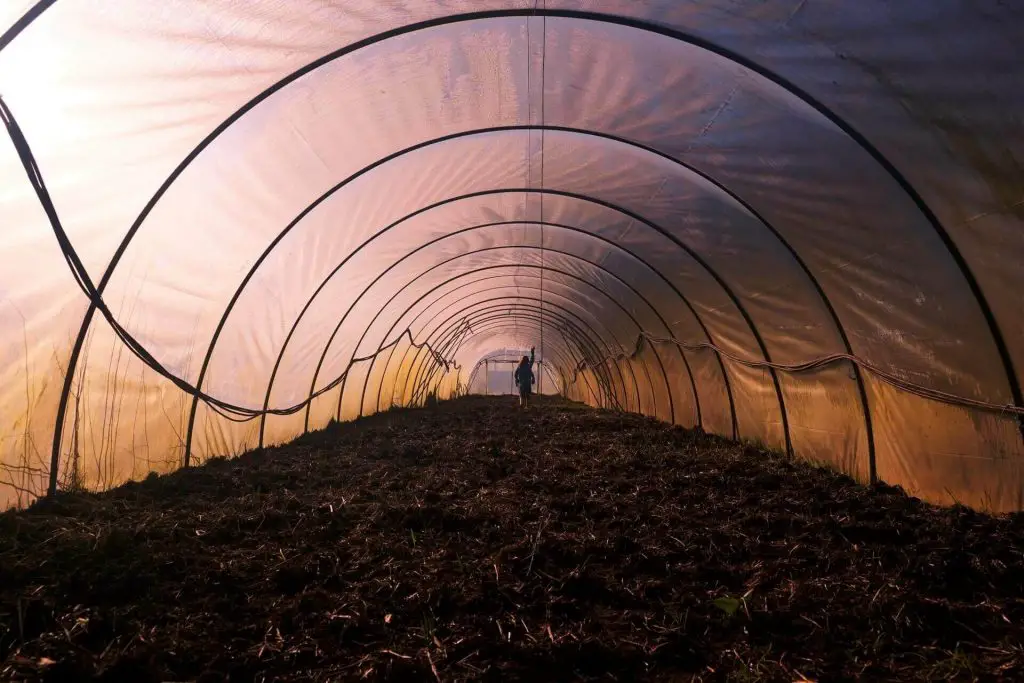
Polytunnels, when used and maintained properly, are an excellent way to grow tomatoes and a variety of other fruits and veggies, healthily.
Polytunnels are especially useful for tomatoes, which are usually available seasonally and cannot survive harsh weather. Once you understand how to grow tomatoes in a polytunnel, it’s only a one-time investment with an unlimited supply.
After you master the methods, the process will be easier with each cropping cycle and you will be able to enjoy delicious, homegrown tomatoes, whenever you want.
You can also look more into which crops to grow alternately in a polytunnel between 2 growth cycles of the tomato crop.
Hope the information in this article helped you. Do share your own experiences while growing tomatoes in a polytunnel with me in the comments.








![How To Harvest Oregano Without Killing The Plant? [Personal Experience!]](https://aboveandbeyondgardening.com/wp-content/uploads/2022/10/How-To-Harvest-Oregano-Without-Killing-The-Plant-7-768x442.jpg)
